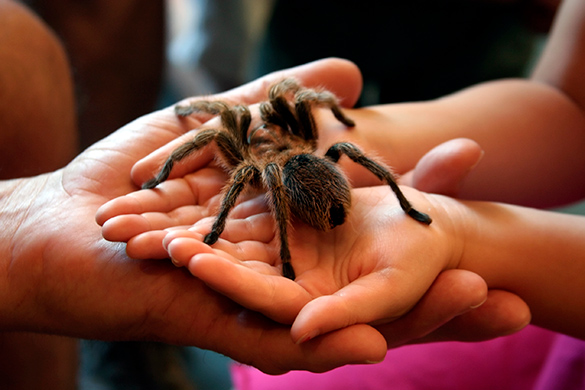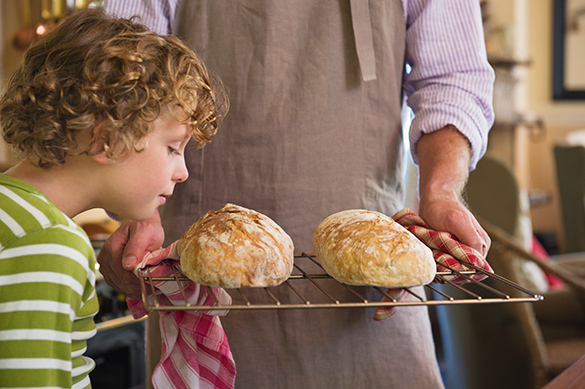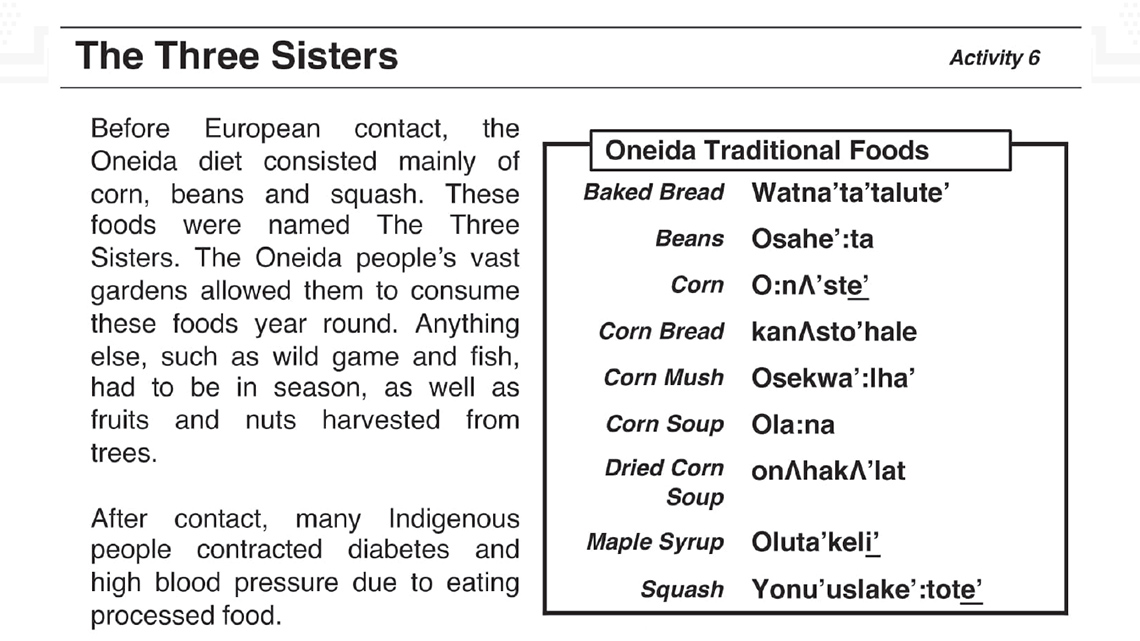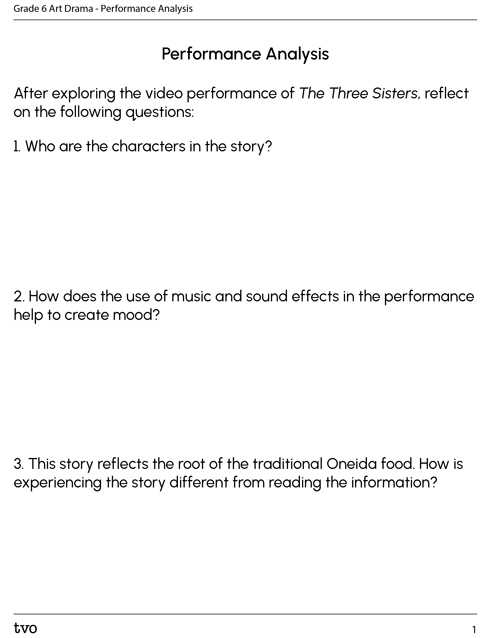Minds On
Warm up

Don’t forget to do your safety check!
Warm Up
Breathe in and out
For our warm-up activity, access this audio clip entitled “Breathing Activity” to learn more about taking deep breaths.
Breathing Activity
Find a comfortable position. Focus your attention on one part of the body at a time.
How does that part of your body feel? If possible, take a deep breath and allow your lungs to expand.
Now, focus your attention on one part of your body. Allow that part to relax before moving on to the next.
As you scan through your body, keep breathing deeply.
Once you have completed the scan, take a moment to stretch.
Drama game
For this drama game, we are going to explore the five senses and how they react.
Press the following tabs to access the five senses activity.

Imagine how your body would react as you pretend to touch:
- a hot stove
- icicles
- sharp tacks
- a cozy blanket

Imagine how your body would react as you pretend to taste:
- a sour lemon
- candies
- spinach

Imagine how your body would react as you pretend to hear:
- a gentle wind
- underwater sounds
- a whistle

Imagine how your body would react as you pretend to notice:
- a car heading towards you
- a giant
- an ant
- a big black spider

Imagine how your body would react as you pretend to smell:
- freshly baked bread
- a skunk
- perfume
- onions
Let’s get started!
Explore the following images:
Brainstorm
What do you think?
What is different about the experience of reading a drama story and exploring a play or a video adaptation of a drama story?
Record your ideas in a notebook or another method of your choice.
Action
Get ready, get set…
Sound and visuals in drama
When a drama story is transformed into a drama performance, there are different ways to create engagement. Sound effect, visuals, and/or props can be used in a drama performance.
Press the following tabs to explore more about sounds and props in a production.
A soundscape or sound collage is a combination of sounds used to create an atmosphere or to enhance important moments of a scene using vocals or instruments.
Musical accompaniment includes musical scores (compositions) or songs, which are added to a production to also create an atmosphere, like background music. Explore the following video entitled ”The Magic of Making Sound” to learn more about how sound effects are made.
- What do you notice about the ways in which sound effects are created?
- Is there anything about this process that surprises you?
Record your ideas in a notebook or another method of your choice.
Check out the following video entitled ”Sound Engineer” to learn more about sound design.
How do decisions made by the sound designer affect the production?
Record your ideas in a notebook or another method of your choice.
A prop is a portable object used in a drama to support the action or to help the audience connect with the setting
Explore this video entitled “Props” to learn more about how actors use props to get into character.
What kind of information does a props designer need before they can create a props list or specific visuals for a drama performance?
Press ‘Possible Answer’ to discover what a props designer might do to create a props and visuals list.
Record your ideas in a notebook or another method of your choice.
The Debajehmujig Theatre Group
Drama is based in the tradition of storytelling. Communities have been engaging in storytelling for centuries. It is part of oral tradition.
Elders and Knowledge Keepers from Indigenous communities play an important role in preserving and passing on their histories, traditions, teachings, and knowledge from one generation to the next. Each nation has its own story about how the world and its people, clans, governance, traditions, and more were created. These are not “myths” or “legends,” rather they are called creation stories. Some stories are only told to particular people or in particular settings. Furthermore, some stories are protected and are only told within the community.
The Debajehmujig Theatre Group is an important community theatre found in Ontario. They share stories through the use of different drama techniques.
Press the following tabs to learn more about the work of the Debajehmujig Theatre Group.
On Manitoulin Island, in Northern Ontario sits an Indigenous theatre company called Debajehmujig Theatre Group. This was the first, and still remains the only, professional theatre company located in a First Nations community in Canada.
In 1984, in West Bay, at M’Chigeeng First Nation, Shirlee Cheechoo and Blake Debassige, together with friends and colleagues came together to found this community theatre. In 1989, they brought it to Wikwemikong, a First Nation reserve, where their headquarters is still found today.
This community theatre creates pieces that reflect Anishinaabeg (Chippewa) worldview. It supports and promotes Indigenous artists, both on and behind the stage. Its goal is to share the theme of creation with our whole being, which includes our emotional, physical, intellectual, and spiritual selves.
Through the art of storytelling, this community theatre shares Indigenous stories that have been passed down for thousands of years through storytelling, music, and dancing.
‘De-ba-jeh-mu-jig’ means ‘storytellers’ in the Cree and Ojibwe language.
Source: debaj.ca
The Three Sisters
Explore the following information about The Three Sisters.
What are some of the important facts we can learn from this passage?

A photo from the FNMIEAO site discussing the importance of “The Three Sisters”
The following information explains the importance of The Three Sisters. “Before European contact, the Oneida diet consisted mainly of corn, beans and squash. These foods were named The Three Sisters. The Oneida people’s vast gardens allowed them to consume these foods year-round. Anything else, such as wild game and fish, had to be in season, as well as fruits and nuts harvested from trees. After contact, many Indigenous people contracted diabetes and high blood pressure due to eating processed food.”
Press ‘Possible Answer’ to access important facts from the passage.
Did You Know?
Did you know?
The Oneida have a long, rich history and are one of the Six Nations that form the Haudenosaunee Confederacy. Haudenosaunee means “The People of the Longhouse” and includes the Mohawk, Oneida, Onondaga, Cayuga, Seneca and Tuscarora nations. Today, there are two Oneida communities in Ontario (Six Nations and the Oneida of the Thames), one in Wisconsin (Oneida Nation of Wisconsin) and another community in New York State (The Oneida Indian Nation). The Three Sisters were vital to Haudenosaunee sustenance and survival.
Source: debaj.ca
The Three Sisters
This video was created by the Debajehmujig Storytellers that tells the story of the Three Sisters. Notice the distinctions between the information passage and the story.
Explore this video entitled “The Three Sisters” to discover the story of the Three Sisters.
What kinds of drama techniques does Kitty Lynn Lickers use to engage the audience?
Press ‘Possible Answer’ to access techniques used by the Debajehmujig Storytellers.
After exploring the film adaption, complete the Performance Analysis in your notebook or using the following fillable and printable document. If you would like, you can use speech-to-text or audio recording tools to record your thoughts.
Consider adding your work to your drama portfolio.
When you’re ready, press ‘Let’s Check!’ to access sample responses for the Performance Analysis.
| Questions | Possible Responses |
|---|---|
|
1. Who are the characters in the story? |
The Three Sisters, a little Odawa boy |
|
2. How does the use of music in the performance help to create mood? |
The music is smooth and soft. The volume stays the same throughout the story. It helps create a peaceful and calm mood. |
|
3. This story reflects the roots of the traditional Oneida diet. How is experiencing the performance different from reading the information? |
This story reflects the roots of the traditional Oneida diet. How is experiencing the performance different from reading the information? |
|
4. What was the setting of the story at the beginning? Did the setting change throughout the story? Why might each setting be important? |
The story begins in a field where the Three Sisters live. Later in the story the setting changes to the Odawa boy’s home where the sisters are reunited. This setting change is important because it answers the question, where do the sisters go? |
|
5. What style of visuals were used to enhance the story? |
The visuals used in the performance are sketches created using a sepia tone (i.e. variations of brown). This gives the effect that the story is from long ago. |
Press the ‘Activity’ button to access the Completed Story to Film Activity.
Go!

Try It
Memorable moment
Consider a memorable moment, memory, or story from your own life.
Consider the following when analyzing your memorable moment or story:
- What is the setting?
- Is anyone part of your story or memory (e.g., people, animals, etc.)?
- Are there any specific types of clothing or items in your story or memory?
- Is there music in your memory? If not, would you choose a type of music or sound that reflects the mood of your story or memory?
- Why is this story or memory important to you?
Record your thoughts about the memory or story in a notebook or another method of your choice.
Consolidation
Putting it all together!

Portfolio
Drama performance
Creating a staged drama production involves many people. For example, prop designers and sound engineers are two different roles that are quite involved when working in the theatre.
Imagine creating a staged production of a moment from your story or memory.
What would you want to include in your staged production?
Select one or more from the following checklist:
Staged Production
You may draw or find similar images of the props you would like, and provide examples of sound effects, songs, and compositions you would like to include.
Complete the My Staged Production Activity in your notebook or using the following fillable and printable document. If you would like, you can use speech-to-text or audio recording tools to record your thoughts. Consider adding your work to your drama portfolio.
| Production component | Description |
|---|---|
|
Props/ Visuals |
|
| Sound effects | |
| Music |
Press the ‘Activity’ button to access the My Staged Production Activity.
Reflection
As you read through these descriptions, which sentence best describes how you are feeling about your understanding of this learning activity? Press the button that is beside this sentence.
I feel…
Now, record your ideas using a voice recorder, speech-to-text, or writing tool.


